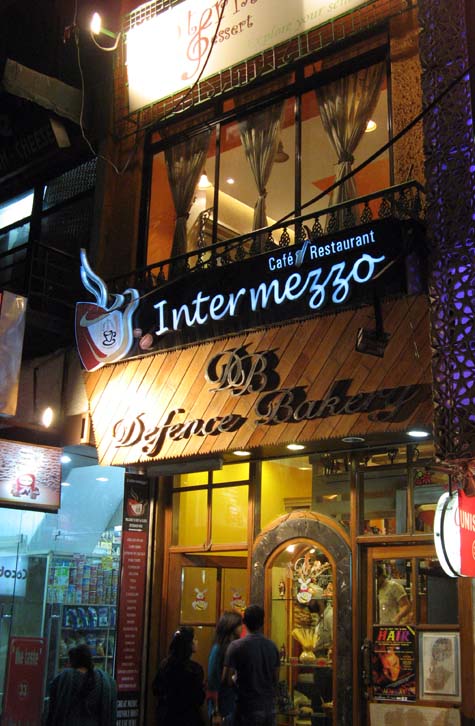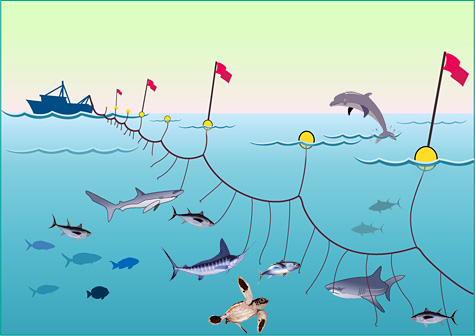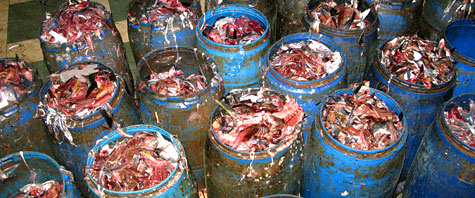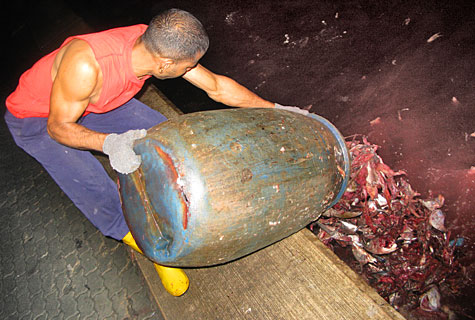Bluepeace Joins Earth Day Celebrations in New Delhi with IYCN
“The struggle of man against power is the struggle of memory against forgetting,” Dr Vandana Shiva, the world-renowned environmental activist and author from India quoted the famous writer Milan Kundera, as she addressed a gathering of youth activists and civil society groups at the Indian Law Institute, New Delhi, stressing how the youth of today symbolizes hope for the global climate movement. In the event organized by Indian Youth Climate Network (IYCN) in association with Indian Law Institute to mark the Earth Day, Dr Shiva expressed hope for the future of the climate movement, noting the positive vibes generated by the World People’s Conference on Climate Change and the Rights of Mother Earth that is about to conclude in Cochabamba, Bolivia; the climate negotiations in Bonn; and the COP16 conference to be held in Cancun, Mexico in December this year. Reflecting on the failure of the COP15 conference held in Copenhagen in December 2009, Dr Shiva painted a positive picture for the future, and noted Mahatma Gandhi as one of the key inspirations that has set her going in the path of activism for over 40 years.

Dr Vandana Shiva addressing an event organised by IYCN to mark Earth Day 2010
Bluepeace joined the Earth Day celebrations organized by IYCN in New Delhi, by making a presentation on the vulnerability of the Maldives to climate change and highlighting possible adaptation measures the country could introduce. In addition, Bluepeace emphasized the importance of protecting the coral reefs and coastal vegetation to mitigate the adverse impacts of climate change. Bluepeace also noted the significance of India in combating climate change as India is an emerging global economic power and how India stands to gain by transforming into a green economy. A digital version of Bluepeace’s photo exhibition Vulnerable was presented at the event as well.
IYCN’s Earth Day event also included the screening of the documentary Eco Dharma, which showcases the Bishnois community in Rajasthan, which holds the belief that they should sacrifice their lives for protection of animals, trees and the natural environment.
https://www.youtube.com/watch?v=F-lhgFVx3EM
Bluepeace’s recent activities in the Indian capital includes participating in a symposium on the Maldives, hosted by Women in Security, Conflict Management and Peace (WISCOMP) held from the 14th-15th of April 2010. Two representatives from Bluepeace participated in the conference titled Exploring the Contours of Democracy in the Maldives. Key figures from the Maldivian government, media and civil society were joined by influential politicians, academics, journalists and activists from India. The symposium provided a platform for Maldivians to share their concerns about the emerging democracy in the country. Lessons learned from the Indian democratic experience, and the outcomes of the environment and economic policies over the past 50 or so years in India were also shared.
Issues of concern raised from the Maldives include climate change, distribution of Tsunami aid, decentralization, human rights, security and religious extremism. At the conference, Bluepeace highlighted the threats to Maldives arising from climate change. A selection of photos from the Vulnerable exhibition was exhibited at the WISCOMP symposium while a digital version of the whole exhibition was presented.
The collection of 17 photos from the Vulnerable exhibition – a photo by each of the 17 photographers who participated in the exhibition – is now on display at Intermezzo Cafe & Restaurant in Defence Colony, New Delhi.
IYCN, which is assisting Bluepeace in promoting the Vulnerable exhibition in New Delhi, is a youth-driven organisation working on various projects across India. For example, IYCN, in association with Loop Solutions, is launching a project to turn the 500 kg of daily food waste generated in Khan Market of New Delhi into compost. The project will also involve encouraging students to build their own gardens and supporting community members to grow herbs needed for the restaurants in Khan Market.
Coinciding with the Earth Day, IYCN also held a fund-raising event at The Living Room Cafe at Hauz Khas Village, New Delhi. Music bands which performed at the event included Manzil, which consisted of former street children who learned music.
By collaborating with organisations such as IYCN, Bluepeace hopes to create a common vision for combating climate change in South Asia and increase the cooperation and participation of the youth in the global south in mitigating the adverse impacts of climate change.







